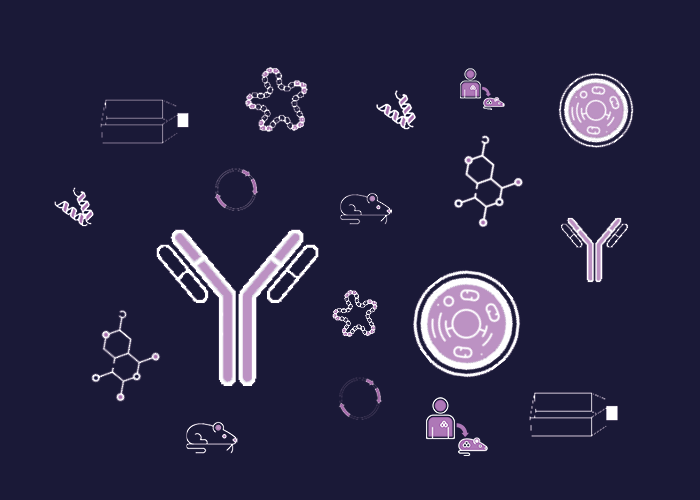Cat. #152088
MCF7/TAMR-4 Cell Line
Cat. #: 152088
Sub-type: Continuous
Unit size: 1x10^6 cells / vial
Availability: 8-10 weeks
Organism: Human
Tissue: Breast
Disease: Cancer
Model: Tumour line
£800.00
This fee is applicable only for non-profit organisations. If you are a for-profit organisation or a researcher working on commercially-sponsored academic research, you will need to contact our licensing team for a commercial use license.
Contributor
Inventor: Anne Lykkesfeldt
Institute: Danish Cancer Society, Denmark
Tool Details
*FOR RESEARCH USE ONLY (for other uses, please contact the licensing team)
- Name: MCF7/TAMR-4 Cell Line
- Alternate name: MCF-7/TAMR-4 Cell Line
- Cancer type: Breast cancer
- Cancers detailed: Breast cancer;Tamoxifen resistant
- Research fields: Cancer;Drug development
- Tool sub type: Continuous
- Parental cell: MCF7 S0.5
- Organism: Human
- Gender: Female
- Tissue: Breast
- Disease: Cancer
- Model: Tumour line
- Conditional: Yes
- Description: MCF7/TAMR-4 cell line is a stable tamoxifen-resistant subline. This cell line has been established in tissue culture after long term treatment with 1 uM tamoxifen. Tamoxifen (Nolvadex) is a widely used drug for hormone-dependent cancer. Tamoxifen resistance (either primary or acquired) makes oestrogen receptor-positive breast cancer much more difficult to treat. This cell line was produced from the parental cell line MCF7/S0.5, as a model cell system to study the effects of tamoxifen resistant cancer growth. Tamoxifen-resistant cells are passaged continuously in the presence of 1 uM tamoxifen. This concentration is lethal for the parental cell line. MCF7/TAMR-4 cells are oestrogen receptor positive and progesterone receptor negative. They are growth inhibited by the pure antioestrogen fulvestrant. Previous applications of this cell line include treatment with steroidal antiestrogens. MCF7/TAMR-4 enables identification of new hormone therapies and greater understanding of the signalling pathways/methods behind tamoxifen resistance. Additionally MCF/TAMR-4 can aid in identifying new predictive markers for response to hormonal therapy.
- Application: Investigate signalling pathways involved in tamoxifen resistance
- Production details: The parental cell line for the MCF7/TAMR-4 cells is MCF7/S0.5, which was adapted to grow at low serum concentration in order to study the effect of estradiol and tamoxifen. MCF7/TAMR-4 has been established from a clone of cells that survived long term treatment with 1 uM tamoxifen. Tamoxifen-resistant cells are passaged continuously in presence of 1 uM tamoxifen, which is lethal for the parental MCF7/S0.5 cell line.
- Biosafety level: 1
- Additional notes: MCF7/TAMR-4 cells are oestrogen receptor positive and progesterone receptor negative. MCF7/TAMR-4 cells are growth inhibited by the pure antiestrogen fulvestrant. The oestrogen receptor is a major driver of growth of MCF7/TAMR-4 cell, ref 1. Treatment targeting the Aurora kinase A restores sensitivity to tamoxifen treatment. The TAMR lines were established from the MCF7/S0.5 cell line, which was adapted to grow with 0.5% fetal calf serum in phenol red containing DMEM/F12 medium. Treatment wi...
- Recommended controls: MCF7-S0.5 parental line
- Cellosaurus id: CVCL_1D42
Target Details
- Target: Oestrogen receptor
Applications
- Application: Investigate signalling pathways involved in tamoxifen resistance
- Application notes: MCF7/TAMR-4 cells are oestrogen receptor positive and progesterone receptor negative. MCF7/TAMR-4 cells are growth inhibited by the pure antiestrogen fulvestrant. The oestrogen receptor is a major driver of growth of MCF7/TAMR-4 cell, ref 1. Treatment targeting the Aurora kinase A restores sensitivity to tamoxifen treatment. The TAMR lines were established from the MCF7/S0.5 cell line, which was adapted to grow with 0.5% fetal calf serum in phenol red containing DMEM/F12 medium. Treatment wi...
Handling
- Format: Frozen
- Passage number: Passage 402 (AL3482), 403 (AL2753)
- Growth medium: DMEM:Ham's F-12 phenol red-free medium containing 1% fetal bovine serum, 2 mM Glutamax and 6 ng/ml insulin. To maintain high-level resistance, medium was supplemented with Tamoxifen (1 uM).
- Temperature: 37° C
- Atmosphere: 5% CO2
- Unit size: 1x10^6 cells / vial
- Shipping conditions: Dry ice
- Storage conditions: Liquid Nitrogen
- Mycoplasma free: Yes
Related Tools
- Related tools: MCF7/S0.5 Cell Line
References
- Joshi et al. 2016. Oncotarget. 7(35):57239-57253. PMID: 27528030.
- Elias et al. 2015. Oncogene. 34(15):1919-1927. PMID: 24882577.
- Thrane et al. 2015. Oncogene. 34:4199–4210. PMID: 25362855.
- Thrane et al. 2013. Breast Cancer Res Treat. 139(1):71-80. PMID: 23609470.
- Cutrupi et al. 2012. Oncogene. 31(40):4353-4361. PMID: 22249258.
- Millour et al. 2010. Oncogene. 29(20):2983-2995. PMID: 20208560.
- Pancholi et al. 2008. Endocr Relat Cancer. 15(4):985-1002. PMID: 18824559.
- Sarwar et al. 2006. Endocr Relat Cancer. 13(3):851-861. PMID: 16954434.






